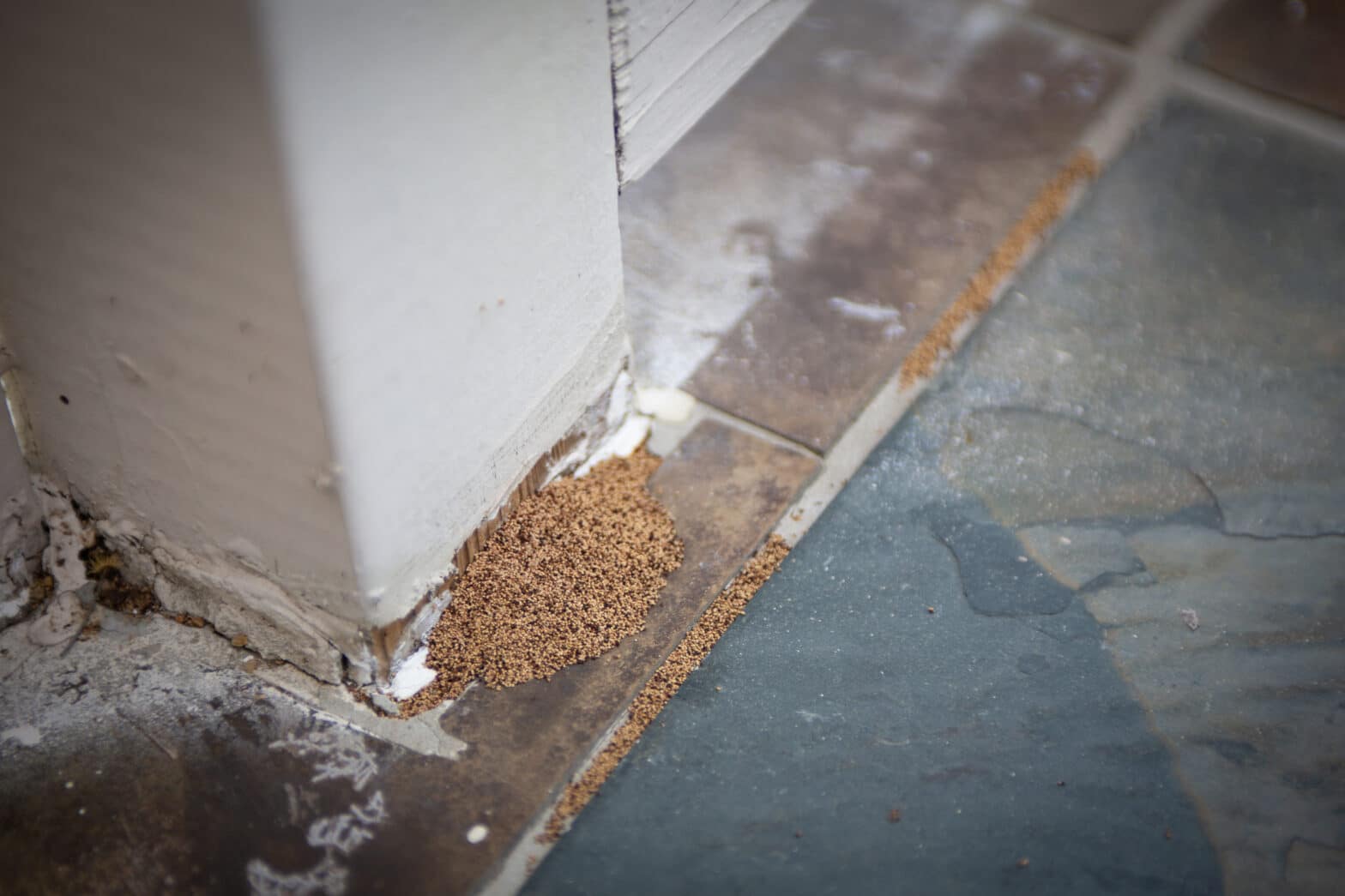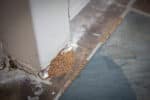
Termite Frass 101
Termite frass, or droppings, is often the first sign and symptom of a drywood termite infestation that a home or business owner discovers. Because the frass is indicative of feeding and activity, it is a crucial indicator of a drywood termite infestation and hallmarks the perfect time to call a professional pest control company like Hulett for a complete inspection, termite species identification, and to learn more about the recommended treatments. This blog will help you understand what termite frass looks like, how to identify it, and the steps to take if you find it in your home.
What is Termite Frass?
Termite frass is the droppings produced by drywood termites as they consume wood. These tiny, six-sided, pellet-shaped droppings are a clear sign of termite activity within your home. Unlike subterranean termites, drywood termites live inside the wood they eat, pushing their waste out through small holes they create, known as “kick-out” holes, to make room for their growing colony. The frass is often found lying on the ground or surfaces underneath the wood that is infested with drywood termite galleries. This behavior makes frass an important clue in identifying and locating an infestation.
What Does Termite Frass Look Like?
Termite frass typically appears as small, hard pellets, often found in piles beneath infested wood. The pellets can vary in color, depending on the type of wood the termites are consuming, but they are generally beige to dark brown, but sometimes red or black. Each pellet is about 1 millimeter in length, with six concave sides, one pointed and one rounded end, resembling tiny grains of coffee or sand.
How to Differentiate Termite Frass from Other Insect Debris
It’s important to distinguish termite frass from other types of insect debris, such as roach or silverfish droppings. Termite frass is uniform in size and shape, unlike the irregular droppings of other insects. While the color can vary, termite frass is usually consistent in size, shape, and feel. Additionally, termite frass is typically found near kick-out holes in wood, whereas other insect debris might be more scattered. Finding termite frass in your home is a sign of an active infestation and should prompt immediate action.
Steps to Take Upon Discovering Termite Frass
Do not disturb the frass. Avoid cleaning up the frass piles until a professional termite inspection is conducted. Inspect surrounding areas for additional signs of termite activity, such as damaged wood or more frass piles. Finally, contact Hulett Environmental Services to schedule an inspection to assess the extent of the infestation and determine the appropriate treatment. Our pest professionals will use the frass piles to help locate the infested areas and determine the best course of action.
Contact Hulett for Professional Termite Inspection and Treatment
When dealing with termite infestations, professional intervention is crucial. Hulett’s trained technicians will perform a thorough inspection to locate frass piles and identify the areas where termites are infesting. By examining these signs, our pest professionals can find the “kick-out” holes used by termites and inject specialized products directly into the colonies to control the infestation. This method is known as the “No-Tent” treatment, preferred by many homeowners for its convenience and effectiveness. The benefits of the “No-Tent” treatment include no need to evacuate your home or undertake extensive preparations, minimal disruption to your daily life, and effective control of termite infestations with a warranty for peace of mind.
Hulett Environmental Services offers comprehensive termite control solutions, ensuring your home is protected from these destructive pests. If you see frass piles around your home or business, Call Hulett today for a free inspection and let our experts handle your termite problems.



